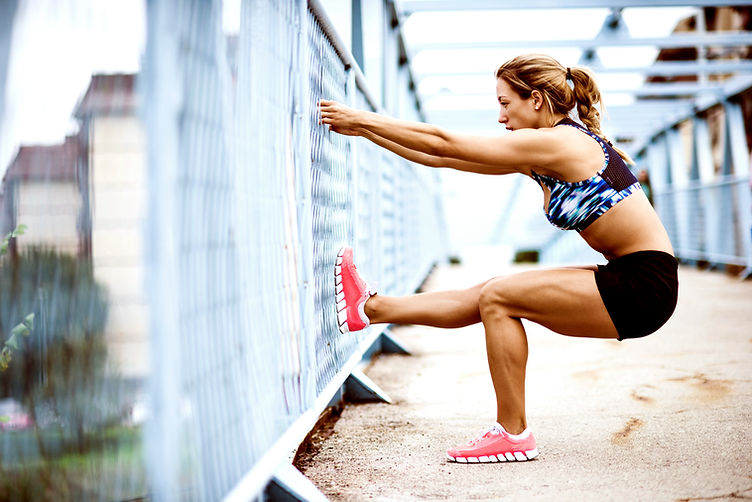Concussions
Concussion Prevention
Mechanisms of Injury:
There are three different mechanisms you can get a concussion. There is coup, countercoup, and rotational. Coup is when a fast-moving object hits the skull. The injury happens on the same side that was impacted. The force of the blow goes straight to the brain. There is usually a cut or a bruise in the affected area. Countercoup is when the moving had hits a larger object that is fixed. The brain moves not only forward, but on the opposite side of the impact. Rotational is the last mechanism of injury for a concussion. Rotational is when the brain twists in the skull. This is dangerous because brain tissue can be damaged and can permanently disable an individual.
Signs and Symptoms:
-confusion -headache
-trouble concentrating -unequal pupils
-retrograde/anterograde amnesia -posturing
-photophobia - loss of balance and coordination
-dizziness
Ankle Sprain
Warm up for preventing ankle sprain:
Ankle Warm up: This is the most important set before starting exercise or activity. This will activate the muscle to prevent injury. Below are 5 different ankle warm ups to perform one after the other.
Ankle rolls: Be in a athletic position and lift leg into the air, rotate ankle to create five small, five medium and five large circles. Perform clockwise and counterclock wise doing 1 set of 15 repetitions each leg.
Calf raises: Remain in an athletic position with feet shoulder width apart. Rise onto your toes and hold for two seconds slowly. Do 2 set of 20 repetitions.
Shin Raises: Be in an athletic position and lift toes off of the floor and hold position for one second. Then lift front half of your foot off of the ground and hold for one to two seconds. Repeat 2 times 20 repetitions
Ankle rolls: Shift your weight to inside of feet so outside of feet are off the ground. Then shift weight to outside of feet so inside of feet are off the ground. Repeat 2 times 20 repetitions each way.
Signs and Symptoms:
-Swelling - Inability to put weight on the affected ankle
-Tenderness -Skin
-Bruising - Skin discoloration
-Pain -Stiffness
How an ankle sprain is treated:
-Using a ACE bandage
-Wearing a brace to support ankle
-Elevating your foot with pillow while resting or sleeping
-Taking ibuprofen to manage swelling and pain
Rotator Cuff
A Common Injury to the Rotator Cuff:
Due to the daily dynamic use of our rotator cuff muscles, strains can occur – a strain is a stretching or tearing of a muscles or tendon.
There are three categories of strains:
Grade I: involves the stretching of the muscle fibers without any tears
Grade II: involves parties tearing of the muscle
Grade III: involves a complete tear of the muscle
How Can a Tear Occur:
Tears can develop from sudden powerful forces against the arm such as: heavy lifting, or an attempt to cushion a fall. These tears can also
develop through repetitive/excessive actions through certain occupations such as: painters, tennis players, swimmers, and at cetera.
Sign and Symptoms:
- Inflammation
- Pain or tenderness around shoulder; pain may radiate down to the arm
- Decreases in range of motion
- Muscle spasms
Treatment:
Depending on the grade of the tearing, surgical treatment can be an option for chronic or Grade III tears.
If surgery is not needed, a doctor may recommend:
- Icing the affected area
- Wearing a sling to minimize movements
- Taking anti-inflammatory medications to aid with the symptoms
Stretching Exercises:
-
Pendulum:
Main Muscles in Action: Supraspinatus, Infraspinatus, Subscapularis, Deltoids
Recommended: 2 sets of 10, 5-6 days per week.
-
Passive Internal Rotation Using a Stick:
Main Muscles in Action: Subscapularis
Recommended: 4 repetitions of each side, 5-6 days per week
Strengthening Exercises:
-
External Rotation with Arm Abducted 90 degrees:
Main Muscles in Action: Infraspinatus and Teres Minor
Recommended: 3 sets of 8, three days per week
Torn Anterior Cruciate Ligament (ACL)
What is the ACL:
The ACL, or Anterior Cruciate Ligament, is a ligament in the hinge-joint knee, and attaches the femur to the tibia. The knee ligaments are the medial collateral (MCL), lateral collateral (LCL), anterior cruciate (ACL) and posterior cruciate (PCL) ligaments.
What is an ACL tear in the knee?
Since the anterior cruciate ligament is a knee stabilizer, it joins the femur to your tibia and creates enhanced stabilization. Basketball, Football, soccer, tennis, gymnastics and volleyball are common ACL injury sports.
How does it feel to have a torn ACL?
An ACL tear can have a feeling of buckling and/or giving way of the knee. Usually this occurs when the patient changed directions to quickly. Some people say it feels like the knee is slipping out of the socket in a backwards motion.
Symptoms?
-
Pain with swelling
-
Full range of motion hindered
-
Tenderness around joint
-
Discomfort with exercise
Is Surgery Necessary?
It is ultimately a case-by-case situation that depends on the degree of the tear and the doctor's decision, as well as, the patient. Some patients that have ACL tears experience no symptoms; however, some patient are terribly symptomatic. Climbing, twisting and sudden stops are difficult for the injured person because the knee is completely unstable.
Non-surgical treatment?
-
Bracing. If recommend by a doctor, a brace could potentially protect your knee from being unstable. It should be removed after 6 weeks. Crutches will be given in more severe cases to prevent weight bearing movements.
-
Physical therapy. Rehabilitation is the most important treatment for an ACL injury. Full function and range of motion is the goal of this type of non-surgical treatment.
-
At home Physical Therapy
